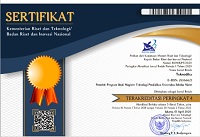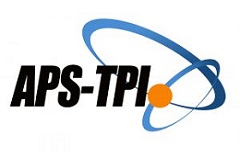Teachers' Views on Canva-Assisted Flashcards as Learning Media on Multiplication Material For Elementary School Students
Abstract
The low creative thinking skills of students in Indonesia, as reflected in the low scores on the Programme for International Student Assessment (PISA), indicate significant challenges in the education system. Conventional learning media that are less interactive are one of the factors that hinder student engagement and the development of their creativity. This study aims to explore teachers' views on the development of Canva-assisted flashcards as interactive learning media for multiplication material in elementary schools. This study uses a descriptive qualitative method, with the subjects of the study being teachers at SD Negeri 2 Pondok, Wonogiri Regency, who were selected purposively. Data collection techniques include semi-structured interviews, non-participatory observation, and document analysis. Data were analyzed using the Miles & Huberman interactive analysis model which includes data reduction, data presentation, and drawing conclusions. The results of the study show that teachers are aware of the limitations of conventional learning media and consider Canva-assisted flashcards as an innovative solution. This media is considered capable of increasing student engagement, facilitating the understanding of multiplication concepts, and supporting creative thinking skills. These findings emphasize the importance of developing technology-based learning media to support 21st-century education.
Keywords
Full Text:
PDFReferences
Admelia, M., Farhana, N., Agustiana, S. S., Fitri, A. I., & Nurmalia, L. (2022). Efektifitas penggunaan aplikasi Canva dalam pembuatan modul pembelajaran interaktif Hypercontent di Sekolah Dasar Al Ikhwan. KACANEGARA Jurnal Pengabdian Pada Masyarakat, 5(2), 177. https://doi.org/10.28989/kacanegara.v5i2.1087
Akramjon Mukhtarovich Matkarimov. (2022). CONCEPTUAL ANALYSIS OF THE IMPLEMENTATION OF THE PISA INTERNATIONAL ASSESSMENT PROGRAM IN THE NATIONAL EDUCATION SYSTEM. EPRA International Journal of Research & Development (IJRD), 153–158. https://doi.org/10.36713/epra11086
Anugraha, G. A. P., & Padmadewi, N. N. (2023). The Need Analysis of Technology-Based Project-Based Learning in Higher Education. Jurnal Pendidikan Bahasa Inggris Undiksha, 10(3), 242–248. https://doi.org/10.23887/jpbi.v10i3.58466
Ardilansari, Muhammad Nizaar, Haifaturrahmah, Najamudin, & Emese K Nagy. (2023). The Right Method for Developing Elementary School Student’s Creative Thinking Skills. Jurnal Ilmiah Sekolah Dasar, 7(3), 452–460. https://doi.org/10.23887/jisd.v7i3.58273
Bilad, M. R., Zubaidah, S., & Prayogi, S. (2024). Addressing the PISA 2022 Results: A Call for Reinvigorating Indonesia’s Education System. International Journal of Essential Competencies in Education, 3(1), 1–12. https://doi.org/10.36312/ijece.v3i1.1935
Buulolo, D., Halawa, D. P., Telaumbanua, M. S., Situmorang, A. S., & Efron Manik. (2023). USE OF CANVA LEARNING MEDIA AS A MEANS OF SUPPORTING MATHEMATICS LEARNING AT SMK NEGERI 1 AMANDRAYA. AFORE : Jurnal Pendidikan Matematika, 2(1), 91–102. https://doi.org/10.57094/afore.v2i1.802
Chudzaifah, I., & Nailil Hikmah, A. (2024). Educational Revolution in The Digital Era: Integrating Technology in T he Independent Curriculum. Journal of Quality Assurance in Islamic Education (JQAIE), 4(1), 38–49. https://doi.org/10.47945/jqaie.v4i1.1359
Dewantara, R. B., Suarsini, E., & Lestari, S. R. (2020). Analisis Kebutuhan Pengembangan Multimedia Interaktif Berbasis Problem Based Learning pada Materi Biologi SMA. Jurnal Pendidikan: Teori, Penelitian, Dan Pengembangan, 5(6), 749. https://doi.org/10.17977/jptpp.v5i6.13587
Fanani, A., Rosidah, C. T., Juniarso, T., Roys, G. A., Putri, E. S., & Vannilia, V. (2022). Bahan Ajar Digital Berbasis Multiaplikasi Mata Pelajaran IPAS SD. Jurnal Pembelajaran, Bimbingan, Dan Pengelolaan Pendidikan, 2(12). https://doi.org/10.17977/um065v2i122022p1175-118
Fazal, K., Sarwar, U., Nargiza, N., Khan, B., & Qi, Z. (2023). Creative Thinking in Pakistani Public Schools: A Qualitative Study of Teachers’ Perspective and Practices. Creative Education, 14(04), 637–657. https://doi.org/10.4236/ce.2023.144042
Hidayati, R., Thomas, V., Luciani, C., & Oscar, S. (2023). Utilization of the Canva Application for Elementary School Learning Media. Journal International Inspire Education Technology, 2(1), 44–52. https://doi.org/10.55849/jiiet.v2i1.219
Ismawati, E., Hersulastuti, H., Amertawengrum, I. P., & Anindita, K. A. (2023). Portrait of Education in Indonesia: Learning from PISA Results 2015 to Present. International Journal of Learning, Teaching and Educational Research, 22(1), 321–340. https://doi.org/10.26803/ijlter.22.1.18
Jannah, D. R. N., & Atmojo, I. R. W. (2022). Media Digital dalam Memberdayakan Kemampuan Berpikir Kritis Abad 21 pada Pembelajaran IPA di Sekolah Dasar. Jurnal Basicedu, 6(1), 1064–1074. https://doi.org/10.31004/basicedu.v6i1.2124
Jerrim, J. (2021). PISA 2018 in England, Northern Ireland, Scotland and Wales: Is the data really representative of all four corners of the UK? Review of Education, 9(3). https://doi.org/10.1002/rev3.3270
Kurniasari, I., Siswono, T. Y. E., Setianingsih, R., & Manoy, J. (2022). Mathematics teacher’s ability in inclusion school made learning media with Canva application. MATHEMATICS EDUCATION AND LEARNING, 030020. https://doi.org/10.1063/5.0103020
Leasa, M., Batlolona, J. R., & Talakua, M. (2021). ELEMENTARY STUDENTS’ CREATIVE THINKING SKILLS IN SCIENCE IN THE MALUKU ISLANDS, INDONESIA. Creativity Studies, 14(1), 74–89. https://doi.org/10.3846/cs.2021.11244
Mayer, R. E. (2009). Multimedia learning, 2nd ed. In Multimedia learning, 2nd ed. Cambridge University Press. https://doi.org/10.1017/CBO9780511811678
Miftahul Jannah, F. N., Nuroso, H., Mudzanatun, M., & Isnuryantono, E. (2023). Penggunaan Aplikasi Canva dalam Media Pembelajaran Matematika di Sekolah Dasar. Jurnal Pendidikan Dasar, 11(1). https://doi.org/10.20961/jpd.v11i1.72716
Miles, M. B., & Huberman, M. A. (2012). Analisis Data Kualitatif: Buku Sumber Tentang Metode-Metode Baru. UI Press.
Moleong, L. J. (2018). Metodologi Penelitian Kualitatif (tigapuluhd). PT Remaja Rosdakarya.
Nandang Mustafa, A. (2023). REFLECTION ON THE LATEST PISA RESULTS OF INDONESIA. International Journal of Advanced Research, 11(05), 1223–1228. https://doi.org/10.21474/IJAR01/16988
Pangestu, W. T., Setyawan, A., & Maula, Q. (2023). Threaded Type Integrative Learning Model Develops Creative Thinking Skills of Elementary School Students. International Journal of Elementary Education, 7(2), 220–229. https://doi.org/10.23887/ijee.v7i2.58519
Pilegard, C., & Mayer, R. E. (2016). Improving academic learning from computer-based narrative games. Contemporary Educational Psychology, 44–45, 12–20. https://doi.org/10.1016/j.cedpsych.2015.12.002
Pratama, L. D., & Lestari, W. (2020). Pengaruh Pelatihan Terhadap Kompetensi Pedagogik Guru Matematika. Jurnal Cendekia : Jurnal Pendidikan Matematika, 4(1), 278–285. https://doi.org/10.31004/cendekia.v4i1.207
Rahardjo, M. (2017). Studi Kasus dalam Penelitian Kualitatif: Konsep dan Prosedurnya.
Ratheeswari, K. (2018). Information Communication Technology in Education. Journal of Applied and Advanced Research, 3(S1), 45. https://doi.org/10.21839/jaar.2018.v3iS1.169
ROY, A. (2019). TECHNOLOGY IN TEACHING AND LEARNING. International Journal of Innovation Education and Research, 7(4), 414–422. https://doi.org/10.31686/ijier.Vol7.Iss4.1433
Saputra, A. G., Rahmawati, T., Andrew, B., & Amri, Y. (2022). Using Canva Application for Elementary School Learning Media. Scientechno: Journal of Science and Technology, 1(1), 46–57. https://doi.org/10.55849/scientechno.v1i1.4
Sari, E. D. P., Trisnawati, R. K., Agustina, M. F., Adiarti, D., & Noorashid, N. (2023). Assessment of Students’ Creative Thinking Skill on the Implementation of Project-Based Learning. International Journal of Language Education, 7(3). https://doi.org/10.26858/ijole.v7i3.38462
Sert, N., & Boynueğri, E. (2016). Digital technology use in ELT classrooms and self-directed learning. World Journal on Educational Technology, 8(1), 51. https://doi.org/10.18844/wjet.v8i1.501
Sihombing, N., Halena, M., & Sofiyah, K. (2024). PENGGUNAAN APLIKASI CANVA DALAM MEDIA PEMBELAJARAN MATEMATIKA KHUSUSNYA DISEKOLAH SD/MI. TEACHER : Jurnal Inovasi Karya Ilmiah Guru, 4(1), 15–26. https://doi.org/10.51878/teacher.v4i1.3080
Siregar, F. A., Saragih, A. H., & Julia, E. (2023). Canva Application-Based Learning Media: Improving Mathematics Learning Outcomes in Fraction Materials for Elementary School Students. International Journal of Computer Applications Technology and Research, 12(08). https://doi.org/10.7753/IJCATR1208.1001
Smith, G., Alhama Najwa, N., Kuncoro, T., & Alfan, M. (2023). Creative Thinking Ability of Elementary School Students Based on Learning Models. KnE Social Sciences. https://doi.org/10.18502/kss.v8i10.13446
Sugiyono. (2016). Memahami Penelitian Kualitatif. Alfabeta CV.
Susantini, N. L. P., & Kristiantari, M. G. R. (2021). Media Flashcard Berbasis Multimedia Interaktif untuk Pengenalan Kosakata Bahasa Inggris pada Anak Usia Dini. Jurnal Pendidikan Anak Usia Dini Undiksha, 9(3), 439. https://doi.org/10.23887/paud.v9i3.37606
Vindo Feladi, Tasya, T. P. D., Yagi Firanda, Katarina Patrisia, & Ceni Febi Kurnia Sari. (2023). DEVELOPMENT OF CANVA-BASED LEARNING MEDIA FOR THE MATHEMATICS SUBJECT OF FRACTIONAL NUMBERS. Research in Education and Technology (REGY), 2(1), 48–51. https://doi.org/10.62590/regy.v2i1.95
Yu, H. (2024). Enhancing creative cognition through project-based learning: An in-depth scholarly exploration. Heliyon, 10(6), e27706. https://doi.org/10.1016/j.heliyon.2024.e27706
Refbacks
- There are currently no refbacks.





.png)













